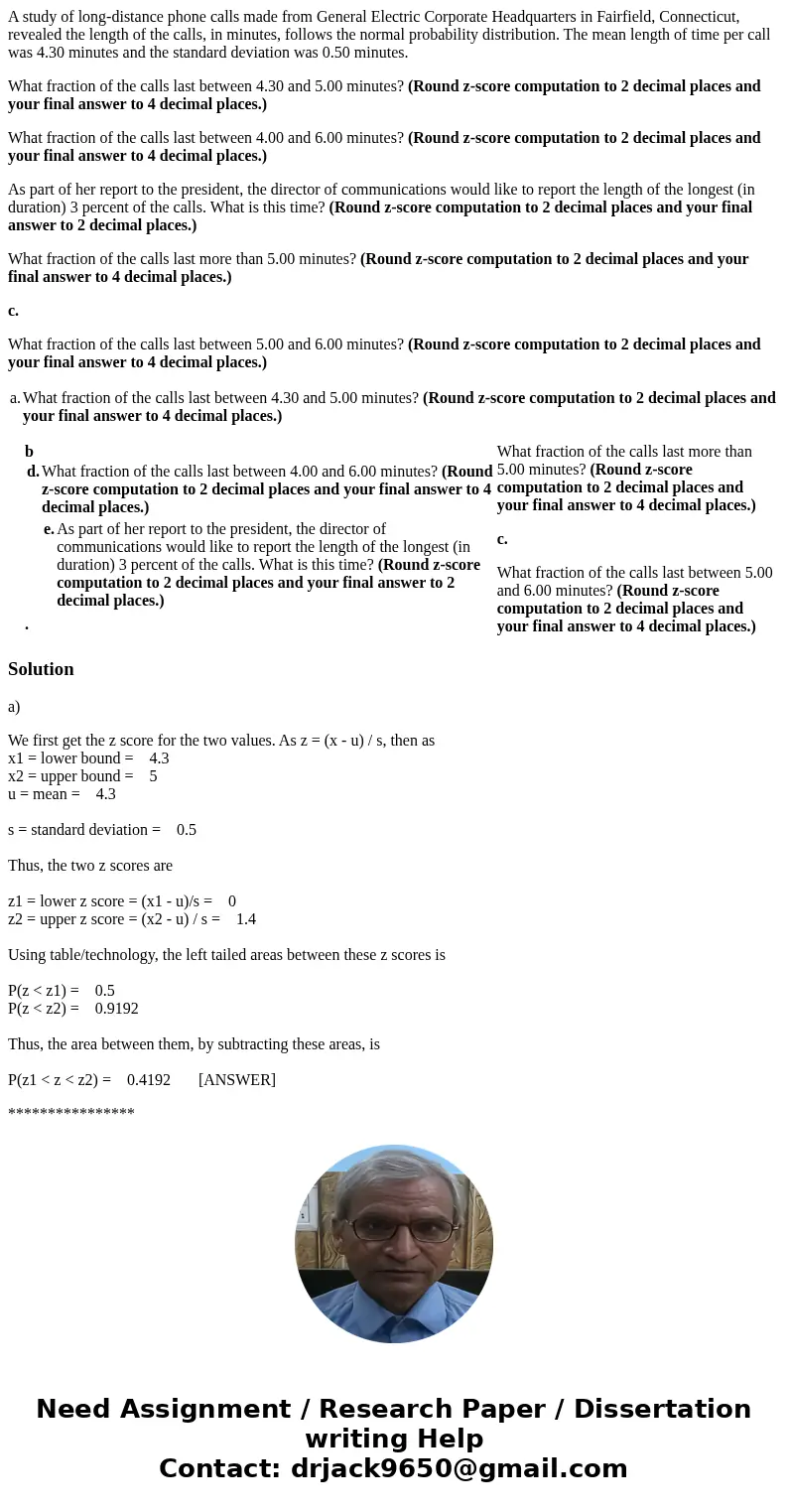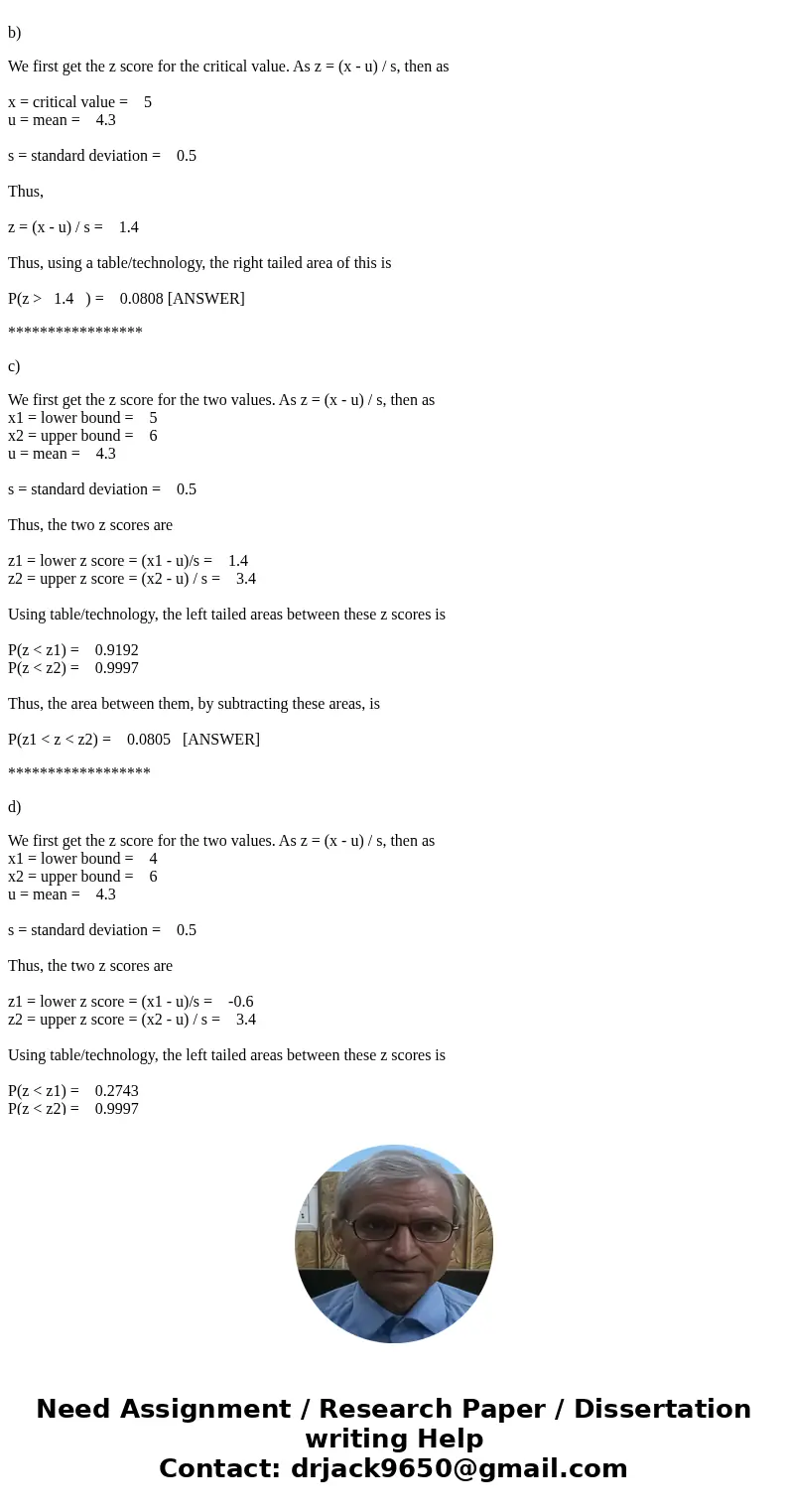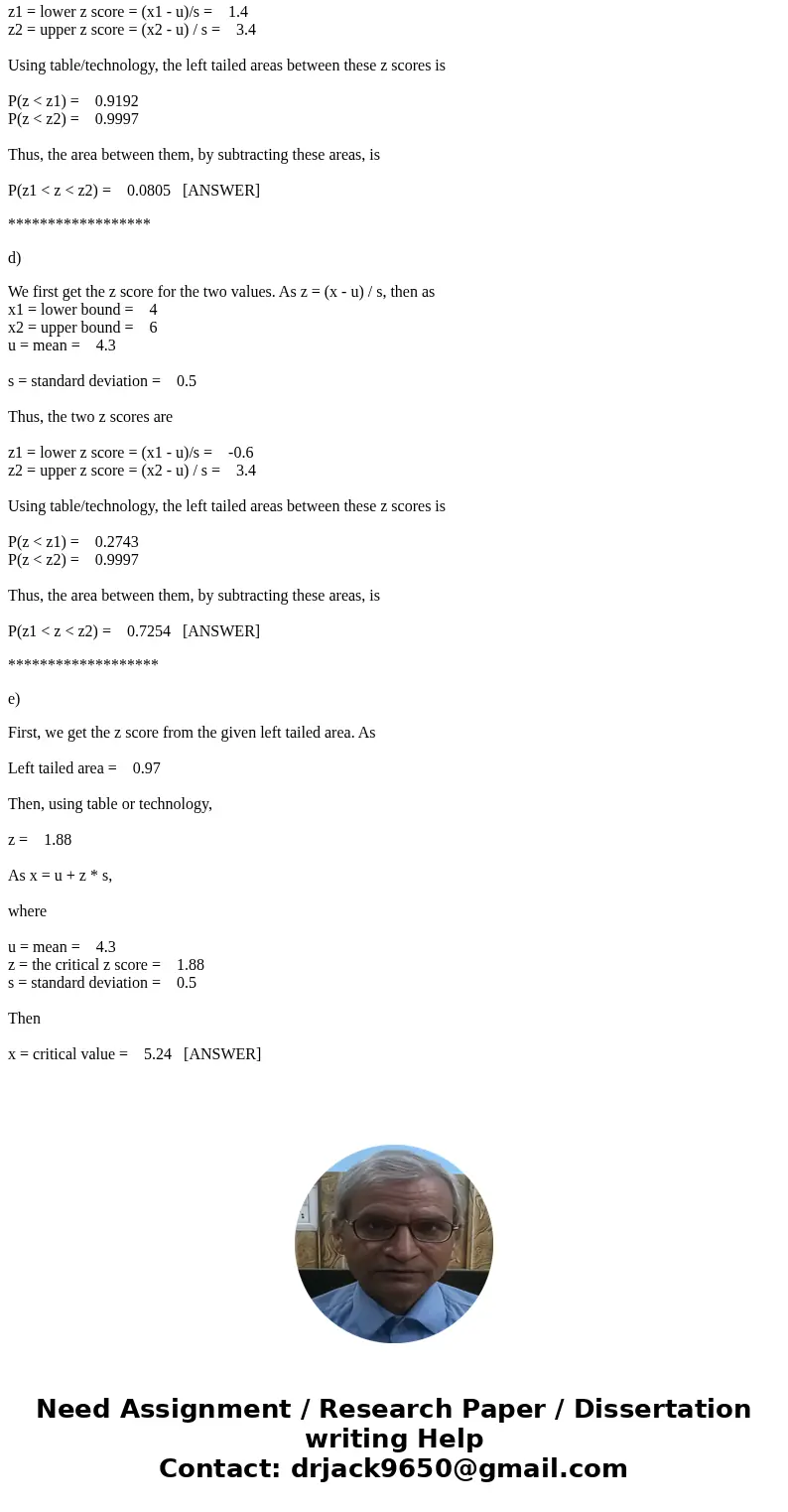A study of longdistance phone calls made from General Electr
A study of long-distance phone calls made from General Electric Corporate Headquarters in Fairfield, Connecticut, revealed the length of the calls, in minutes, follows the normal probability distribution. The mean length of time per call was 4.30 minutes and the standard deviation was 0.50 minutes.
What fraction of the calls last between 4.30 and 5.00 minutes? (Round z-score computation to 2 decimal places and your final answer to 4 decimal places.)
What fraction of the calls last between 4.00 and 6.00 minutes? (Round z-score computation to 2 decimal places and your final answer to 4 decimal places.)
As part of her report to the president, the director of communications would like to report the length of the longest (in duration) 3 percent of the calls. What is this time? (Round z-score computation to 2 decimal places and your final answer to 2 decimal places.)
What fraction of the calls last more than 5.00 minutes? (Round z-score computation to 2 decimal places and your final answer to 4 decimal places.)
c.
What fraction of the calls last between 5.00 and 6.00 minutes? (Round z-score computation to 2 decimal places and your final answer to 4 decimal places.)
| a. | What fraction of the calls last between 4.30 and 5.00 minutes? (Round z-score computation to 2 decimal places and your final answer to 4 decimal places.)
|
Solution
a)
We first get the z score for the two values. As z = (x - u) / s, then as
x1 = lower bound = 4.3
x2 = upper bound = 5
u = mean = 4.3
s = standard deviation = 0.5
Thus, the two z scores are
z1 = lower z score = (x1 - u)/s = 0
z2 = upper z score = (x2 - u) / s = 1.4
Using table/technology, the left tailed areas between these z scores is
P(z < z1) = 0.5
P(z < z2) = 0.9192
Thus, the area between them, by subtracting these areas, is
P(z1 < z < z2) = 0.4192 [ANSWER]
****************
b)
We first get the z score for the critical value. As z = (x - u) / s, then as
x = critical value = 5
u = mean = 4.3
s = standard deviation = 0.5
Thus,
z = (x - u) / s = 1.4
Thus, using a table/technology, the right tailed area of this is
P(z > 1.4 ) = 0.0808 [ANSWER]
*****************
c)
We first get the z score for the two values. As z = (x - u) / s, then as
x1 = lower bound = 5
x2 = upper bound = 6
u = mean = 4.3
s = standard deviation = 0.5
Thus, the two z scores are
z1 = lower z score = (x1 - u)/s = 1.4
z2 = upper z score = (x2 - u) / s = 3.4
Using table/technology, the left tailed areas between these z scores is
P(z < z1) = 0.9192
P(z < z2) = 0.9997
Thus, the area between them, by subtracting these areas, is
P(z1 < z < z2) = 0.0805 [ANSWER]
******************
d)
We first get the z score for the two values. As z = (x - u) / s, then as
x1 = lower bound = 4
x2 = upper bound = 6
u = mean = 4.3
s = standard deviation = 0.5
Thus, the two z scores are
z1 = lower z score = (x1 - u)/s = -0.6
z2 = upper z score = (x2 - u) / s = 3.4
Using table/technology, the left tailed areas between these z scores is
P(z < z1) = 0.2743
P(z < z2) = 0.9997
Thus, the area between them, by subtracting these areas, is
P(z1 < z < z2) = 0.7254 [ANSWER]
*******************
e)
First, we get the z score from the given left tailed area. As
Left tailed area = 0.97
Then, using table or technology,
z = 1.88
As x = u + z * s,
where
u = mean = 4.3
z = the critical z score = 1.88
s = standard deviation = 0.5
Then
x = critical value = 5.24 [ANSWER]



 Homework Sourse
Homework Sourse